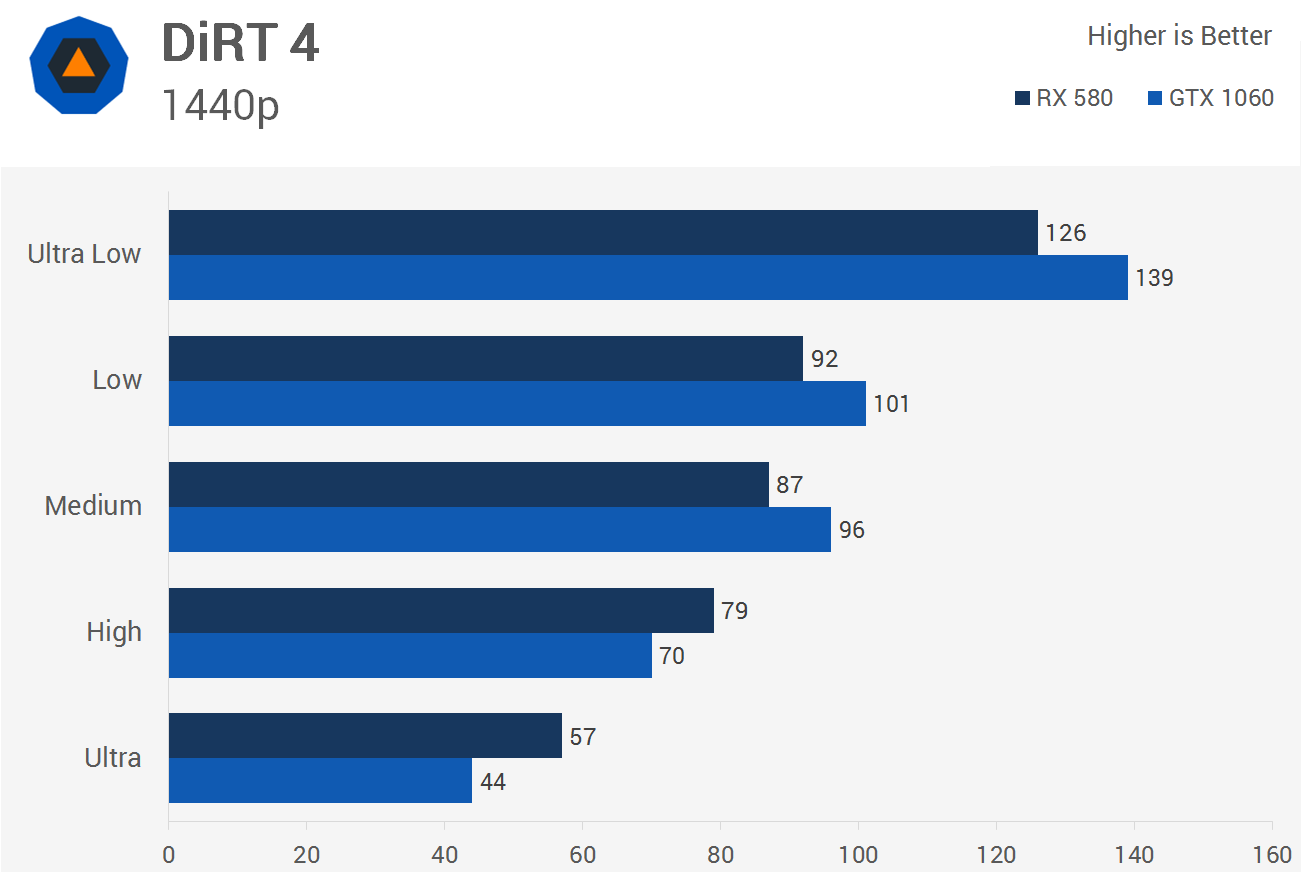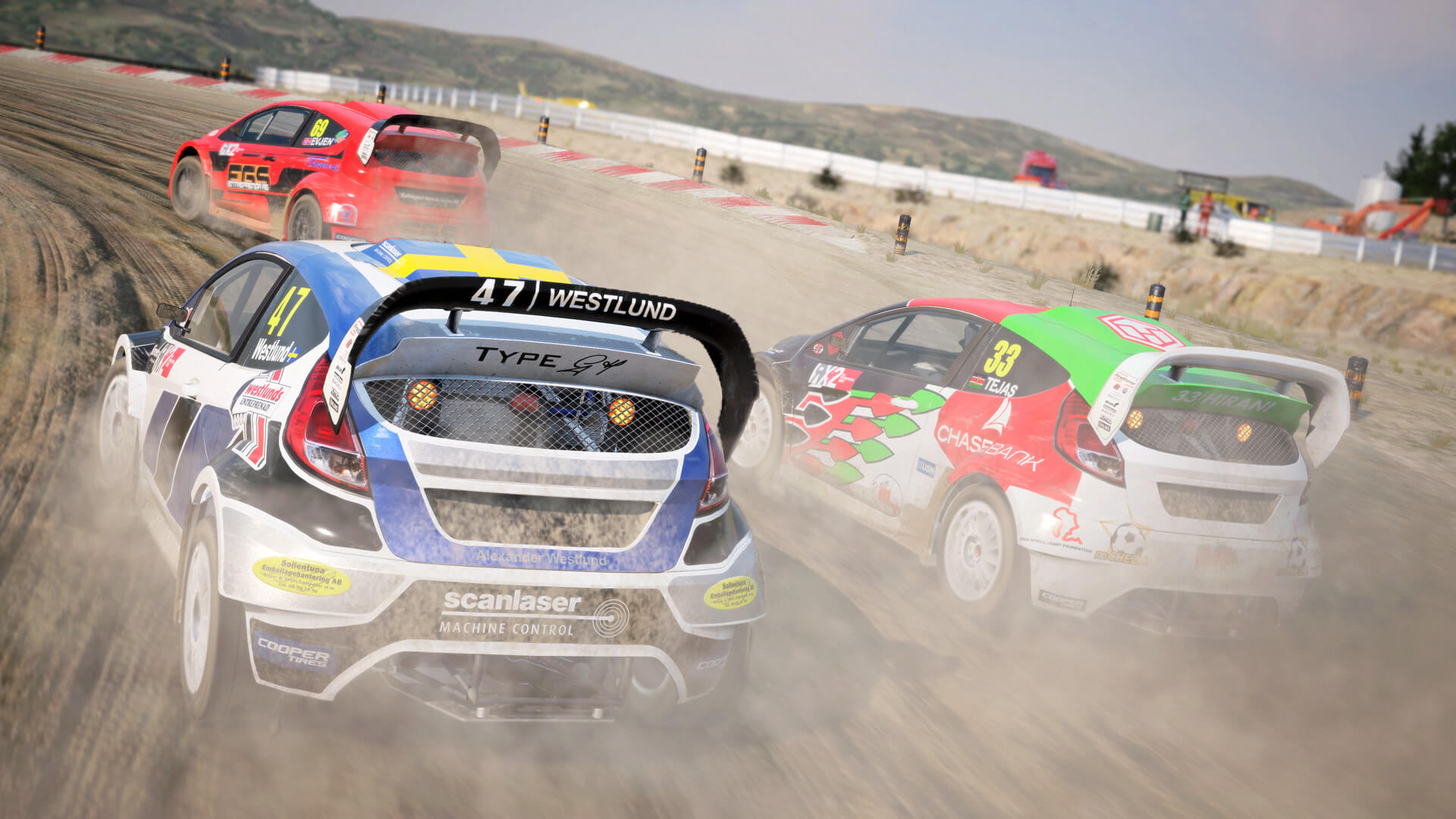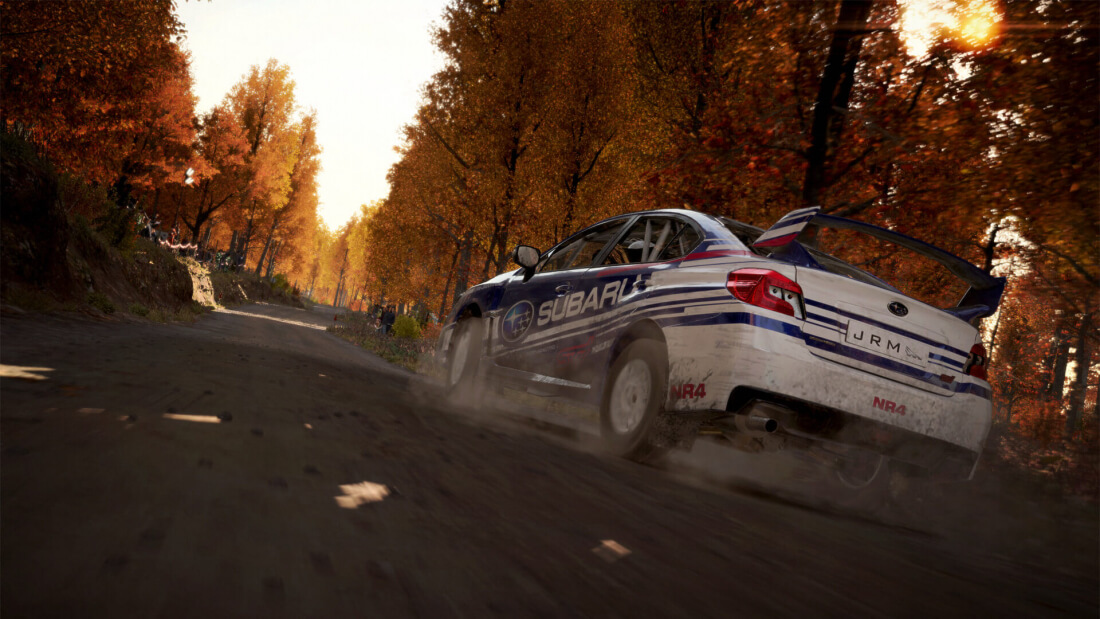Codemasters' long-running rally game has returned for its twelfth lap, launching to largely positive reviews last Tuesday on PC, Xbox and PS4. With updated drivers from AMD and Nvidia arriving just a few days later, it seemed like an ideal time to see how the title runs on current and previous-generation GPUs.
AMD's Crimson ReLive Edition 17.6.1 driver claims up to a 30% performance improvement over the previous driver for the RX 580 when using 8xMSAA. None of my tests will use higher than 4xMSAA as this is what the ultra preset enables, but you can expect more optimal performance across the board with this driver. As for Nvidia, its 382.53 WHQL driver claims to provide an optimal gaming experience for Dirt 4, though given the performance we recorded, there's probably already a more 'optimal' driver in the works. We'll look at the numbers shortly, but as a bit of a spoiler we can say that the red team has an edge in this title for now.
We'll be focusing exclusively on current and previous generation graphics cards tested at 1080p, 1440p and 4K. Please note the Radeon RX 480 and 470 have been dropped since they are similar to the newer RX 580 and 570. Even without those cards, we tested a grand total of 27 GPUs, so that should give you a solid reference point.
All testing was conducted using our usual Core i7-7700K system clocked at 4.9GHz. We decided to skip CPU scaling results for this title as Dirt 4 doesn't require a powerful CPU, and from some internal tests we figured that a modern dual-core CPU with Hyper-Threading such as the Pentium G4560 does well. The game heavily loads a single thread and at the most uses two threads efficiently. Beyond that, on most modern quad-core or greater CPUs you will see 20% or less load on additional threads.
That doesn't mean the game is poorly optimized, it just means it's not CPU intensive. This isn't an Arma 3 sort of scenario where a single thread gets pounded and the CPU is still the performance limiting factor. In other words, I'm not seeing a CPU bottleneck in this game. Of course, it'd be better if the EGO 4.0 game engine distributed load more evenly, but it's not an issue for a game like Dirt 4 that is primarily GPU-bound.
For those of you wondering, I saw almost no difference in performance when using the GTX 1080 Ti at 1080p using either the Pentium G4560 or a heavily overclocked Core i7-7700K, the CPU really makes little difference here. The Ryzen 5 1400, 1600 and 1700 also delivered similar performance and again were all able to roughly max out the 1080 Ti.
Using a GeForce 10 series GPU, the game consumes almost 4GB of VRAM at 1080p using the Ultra quality settings, about 4.5GB at 1440p and around 6GB at 4K. Using an AMD Radeon RX 580 8GB, these figures were slightly inflated hitting 4.5GB at 1080p, just over 5GB at 1440p and 7.5GB at 4K. This is evidence that Nvidia's memory compression technology is slightly superior.
When it comes to system memory usage, the game typically consumes ~4 - 5GB depending on its configuration. The exception to this will be seen when using a graphics card featuring a limited VRAM buffer at resolutions it can't handle. Anyway, 8GB of RAM should have you covered. That's about all we needed to cover in our prelude to Dirt 4's graphics performance...
Test System Specs & Memory
- Intel Core i7-7700K @ 4.9 GHz
- Asrock Z270 Extreme4
- 32GB DDR4-3000 RAM
- Samsung SSD 850 Evo 2TB
- MSI GTX 1060 Gaming X [3GB]
- Auros RX 570 [4GB]
- Windows 10 Pro 64-bit
- GeForce Game Ready Driver 382.53
- Crimson ReLive Edition 17.6.1
1080p Performance

Right away we see the GTX 960 trailing the R9 380 by a 17% margin while the GTX 970 was 31% slower than the R9 390. In fact, although the GTX 980 Ti was able to pull ahead of the R9 390X by a small margin when comparing the average frame rate, it was 5% slower when comparing the minimum.
Meanwhile, the Fury X pulled head of the GTX 980 Ti and 1070 at 1080p with an average of 96fps making it around 20% faster and 30% faster when comparing the minimum frame rate. Even in relation to the GTX 1080 the Fury X looked good at only 10 fps slower. Of course the Titan XP and GTX 1080 Ti were faster again, but you'd naturally expect them to be.
Higher-end Nvidia GPUs are suffering some kind of issue with minimum frame rates that is strange but worth keeping an eye on.
1440p Performance

Jumping up to 1440p sees few GPUs capable of achieving 60fps and it does change things quite drastically as now the Nvidia GPUs come right back into play. The GTX 1060 isn't a great deal slower than the RX 580 now, or at least compared to what we saw at 1080p. The GTX 1070 pulls ahead of RX 580 providing slightly better minimum frame rate performance with a much stronger average.
It was almost like we were seeing a driver overhead issue for Nvidia at 1080p, wouldn't that be ironic. Further down, we see the GTX 960 is now just a single frame slower than the R9 380. That said, the GTX 970 is still quite a bit slower than the R9 390, trailing by a 25% margin.
The GTX 980 Ti can close in on the Fury X though it's still quite a bit slower when comparing minimum frame rates. The 46 fps minimum of the 980 Ti means it can only match the Nano and 390X.
4K Performance

Finally at 4K it's just the GTX 1080 Ti that break the 60fps barrier. I should note that the Gigabyte Aorus GTX 1080 Ti was used for testing while the Titan XP is obviously a reference card.
Quality Preset Comparisons

Last up we have some quality preset testing which has been carried out at 1440p using the GTX 1060 and RX 580. Whereas the GTX 1060 was almost 30% slower using the ultra quality preset, it narrowed that margin to 11% slower when playing on high quality. When moving to medium the 1060 managed to pull ahead by about 10% and this was also seen when using the low and ultra low presets as well.
There is clearly something enabled or turned up with the high and ultra presets that hurts Nvidia more than it does AMD.
Before wrapping things up, here's a quick look at the various quality presets side-by-side, recorded using the Titan XP at 4K.
Wrapping it up
AMD is showing strong performance in Dirt 4, particularly when looking at minimum frame rates. That said, if you're willing to drop the quality preset from ultra to high or medium, Nvidia does catch up and even gains an edge at the lower settings – again, we're not sure what's hampering the GeForce cards at higher qualities.
When reducing the settings from ultra to high, the GTX 1060 saw a massive 60% boost in performance while the RX 580 improved by 40% – those are some pretty big numbers for what works out to be a minor loss in visual quality if you ask us. Running the game at high allowed both of those cards to average well over 60fps at 1440p, so unless you are running extreme hardware we recommend using the high quality preset in favor of ultra, though this is true for almost all modern games. As usual, vegetation is what completely hammers performance when set to ultra. Courses with little vegetation ran at over 70fps with a mid-range graphics cards and that figure would often be halved with heavy vegetation (which is how I tested).
When it comes to CPU performance, the game really only uses one or two threads and while that sounds bad, this just isn't a game that requires a lot of resources here to run well.
Overall, assuming you have a modern graphics card, you can expect smooth performance from Dirt 4, particularly on high quality although playable frame rates on ultra are far from unattainable.




